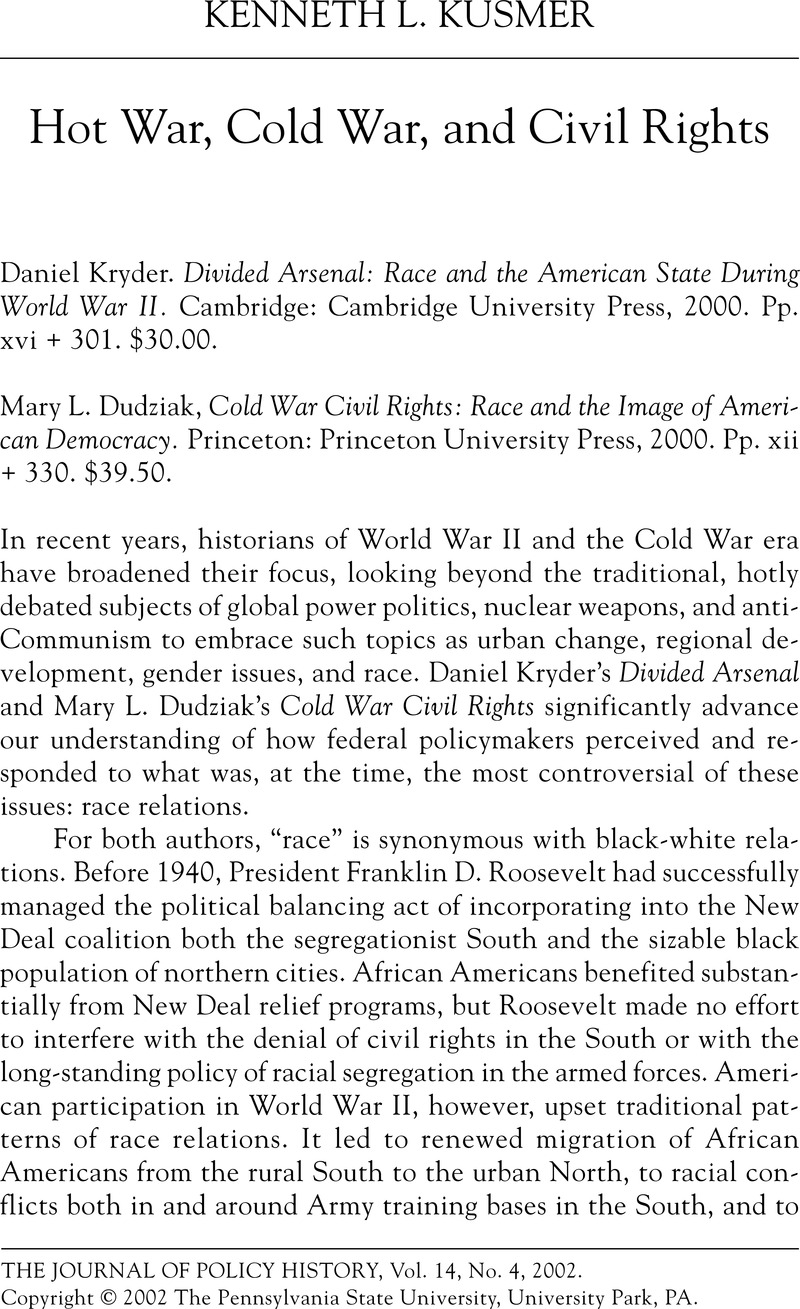No CrossRef data available.
Published online by Cambridge University Press: 27 April 2009

1. See Drake, St. Clair and Cayton, Horace R., Black Metropolis: A Study of Negro Life in a Northern Metropolis (New York, 1945)Google Scholar; Copeci, Dominic J. Jr., Race Relations in Wartime Detroit: The Sojourner Truth Housing Controversy of 1942 (Philadelphia, 1984)Google Scholar; Thomas, Richard W., Life Is What We Make It: Building Black Community in Detroit, 1915–1945 (Bloomington, 1992), 228–312Google Scholar; Sugrue, Thomas J., The Origins of the Urban Crisis: Race and Inequality in Postwar Detroit (Princeton, 1996), 15–88.Google Scholar
2. For a judicious overview of the racial policies of the Congress of Industrial Organizations (CIO) unions and their relationship to FEPC, see Zeiger, Robert, The CIO: 1935–1955 (Chapel Hill, 1995), 152–161.Google Scholar
3. See Capeci, Dominic J. Jr., The Harlem Riot of 1943 (Philadelphia, 1977)Google Scholar; idem and Wilkerson, Martha, Layered Violence: The Detroit Rioters of 1943 (Jackson, Miss., 1991)Google Scholar; Johnson, Karl Ellis, “Black Philadelphia in Transition: The African-American Struggle on the Homefront during World War II and the Cold War Period, 1941–1963” (Ph.D. diss., Temple University, 2001), 27–125.Google Scholar
4. In discussing the image of the United States abroad, Dudziak relies exclusively on English-language newspapers. It is not clear whether the views expressed there are representative of non-English newspapers (which, one assumes, were much more influential and more widely read).
5. It is not clear what travel Dudziak is referring to. She provides only the example of Justice William O. Douglas.
6. Sherry, Michael S., In the Shadow of War: The United States Since the 1930s (New Haven, 1995), 147.Google Scholar
7. Quoted in The Eisenhower Diaries, ed. Ferrell, Robert (New York, 1981), 313.Google Scholar
8. See, for example, Garrow, David J., Bearing the Cross: Martin Luther King, Jr., and the Southern Christian Leadership Conference (New York, 1986), 104, 117Google Scholar; Malcolm X: The FBI Files, ed. Carson, Clayborne (New York, 1991).Google Scholar